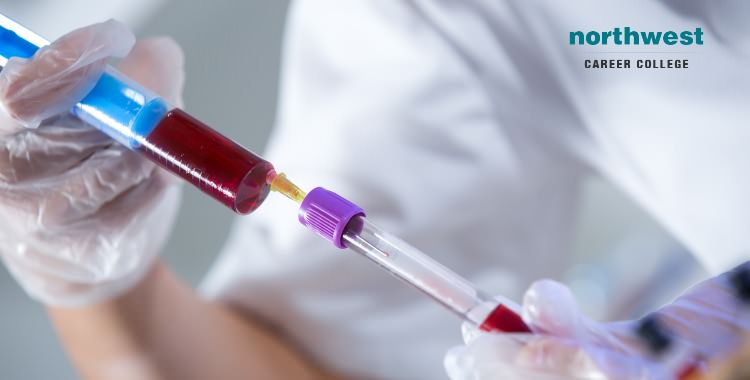Northeast Medical Institute - New Haven Campus Phlebotomy Course & Cna Class Can Be Fun For Everyone
Table of ContentsNot known Incorrect Statements About Northeast Medical Institute - New Haven Campus Phlebotomy Course & Cna Class The 8-Minute Rule for Northeast Medical Institute - New Haven Campus Phlebotomy Course & Cna ClassGetting My Northeast Medical Institute - New Haven Campus Phlebotomy Course & Cna Class To WorkNortheast Medical Institute - New Haven Campus Phlebotomy Course & Cna Class - The FactsNot known Details About Northeast Medical Institute - New Haven Campus Phlebotomy Course & Cna Class The smart Trick of Northeast Medical Institute - New Haven Campus Phlebotomy Course & Cna Class That Nobody is Talking About
The use of such devices need to be gone along with by other infection avoidance and control methods, and training in their use.For setups with low sources, expense is a driving variable in procurement of safety-engineered tools - CNA Training. Where safety-engineered tools are not offered, proficient use a needle and syringe is appropriate. Unexpected direct exposure and details information regarding an occurrence should be videotaped in a register. Support solutions need to be promoted for those that go through unexpected exposure.
labelling); transportation conditions; interpretation of results for medical administration. In an outpatient department or center, give a devoted phlebotomy workstation containing: a clean surface with two chairs (one for the phlebotomist and the other for the individual); a hand wash basin with soap, running water and paper towels; alcohol hand rub. In the blood-sampling area for an outpatient department or clinic, give a comfy reclining sofa with an arm remainder.
Northeast Medical Institute - New Haven Campus Phlebotomy Course & Cna Class Fundamentals Explained
Guarantee that the indications for blood tasting are plainly defined, either in a composed method or in documented directions (e.g. in a research laboratory form). Gather all the tools required for the treatment and area it within safe and simple reach on a tray or cart, making certain that all the items are clearly visible.
Where the client is grown-up and mindful, follow the actions laid out listed below. Present on your own to the person, and ask the client to specify their complete name. Examine that the laboratory form matches the client's identity (i.e. match the client's information with the research laboratory kind, to ensure accurate identification). Ask whether the patent has allergies, phobias or has ever fainted during previous injections or blood attracts.
Make the individual comfortable in a supine setting (if possible). The individual has a right to refuse an examination at any kind of time prior to the blood sampling, so it is crucial to make sure that the individual has recognized the procedure - CNA Classes.
3 Easy Facts About Northeast Medical Institute - New Haven Campus Phlebotomy Course & Cna Class Described
Expand the individual's arm and check the antecubital fossa or lower arm. Locate a capillary of an excellent dimension that is noticeable, straight and clear. The diagram in Area 2.3, shows common placements of the vessels, but lots of variants are feasible. The average cubital vein lies between muscular tissues and is usually the most easy to puncture.
DO NOT insert the needle where capillaries are diverting, since this raises the chance of a haematoma. The vein should be visible without applying the tourniquet. Situating the vein will certainly assist in determining the correct size of needle. Find Out More Apply the tourniquet regarding 45 finger widths over the venepuncture website and re-examine the vein.
Haemolysis, contamination and presence of intravenous fluid and medicine can all change the outcomes (39. Nursing team and medical professionals might access central venous lines for samplings complying with procedures. Samplings from main lines lug a risk of contamination or incorrect laboratory test results. It serves, however not suitable, to injure samplings when very first presenting an in-dwelling venous gadget, prior to linking the cannula to the intravenous liquids.
Little Known Questions About Northeast Medical Institute - New Haven Campus Phlebotomy Course & Cna Class.
Allow the area to completely dry. Failing to enable sufficient contact time increases the risk of contamination. DO NOT touch the cleaned site; in certain, DO NOT position a finger over the blood vessel to lead the shaft of the exposed needle. It the site is touched, repeat the disinfection. Execute venepuncture as follows.
Ask the individual to create a hand so the blood vessels are much more prominent. Enter the capillary quickly at a 30 degree angle or much less, and continue to introduce the needle along the capillary at the easiest angle of access - PCT Courses. When enough blood has been collected, release the tourniquet BEFORE withdrawing the needle
Examine This Report about Northeast Medical Institute - New Haven Campus Phlebotomy Course & Cna Class
Take out the needle gently and use mild pressure to the site with a clean gauze or completely dry cotton-wool ball. Ask the patient to hold the gauze or cotton wool in position, with the arm extended and raised. Ask the person NOT to bend the arm, since doing so creates a haematoma.

Northeast Medical Institute - New Haven Campus Phlebotomy Course & Cna Class Fundamentals Explained
Where possible, keep the tubes in a shelf and move the shelf in the direction of you - https://v3vx4gjojzj.typeform.com/to/rlaz6c3I. If the sample tube does not have a rubber stopper, inject extremely slowly right into the tube as lessening the stress and speed used to transfer the sampling minimizes the risk of haemolysis.
